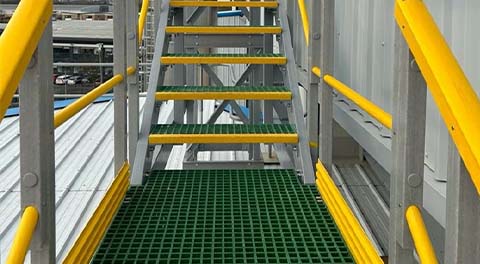loading...
- No. 9, Xingyuan South Street, Dongwaihuan Road, Zaoqiang County, Hengshui, Hebei, China
- admin@zjcomposites.com
- +86 15097380338
- Welcome to visit our website!
pressure tank
Understanding Pressure Tanks Essential Components for Fluid Storage and Management
Pressure tanks are crucial components in various industries, providing efficient storage and management of liquids and gases under pressure. These tanks are engineered to withstand high pressures and are used widely in water supply systems, chemical processing, food and beverage industries, and various other applications.
What is a Pressure Tank?
A pressure tank is a vessel designed to hold substances at a pressure substantially different from the ambient pressure. Unlike simple storage tanks that operate at atmospheric pressure, pressure tanks maintain a required pressure level, which can be essential for processes where pressure is needed to move fluids or to keep them in a specific state.
How Do Pressure Tanks Work?
The fundamental principle behind pressure tanks is based on the relationship between pressure, volume, and temperature as described by the gas laws. When a fluid is pumped into the tank, the air or gas above the liquid compresses, leading to an increase in pressure. This pressurization helps in pushing the fluid out of the tank when needed, ensuring a constant flow in systems such as water supply.
There are generally two types of pressure tanks bladder tanks and diaphragm tanks. Bladder tanks have a flexible diaphragm or bladder that separates the gas and liquid, allowing the tank to maintain pressure as the liquid is drawn out. Diaphragm tanks use a similar approach but may have a rigid design, featuring a flexible diaphragm that expands and contracts to accommodate changing fluid levels.
Applications of Pressure Tanks
1. Water Systems In residential and commercial water systems, pressure tanks help maintain a consistent water pressure. They minimize the cycling of pumps, enhancing the system's efficiency and extending the lifespan of the pump.
pressure tank

2. Agricultural Uses In agriculture, pressure tanks are employed for irrigation systems, allowing for the distribution of water under pressure, which is vital for efficient watering of crops.
3. Industrial Processes Many manufacturing processes require liquids and gases to be stored under pressure. Pressure tanks are integral for chemical storage, where maintaining the integrity and reactivity of specific substances is crucial.
4. Food and Beverage Industry In this sector, pressure tanks are used for carbonated beverages. They allow for the controlled release of carbon dioxide to ensure drinks are effervescent when packaged.
5. HVAC Systems Pressure tanks are also used in heating, ventilation, and air conditioning systems to maintain the right pressure levels, ensuring efficient operation.
Safety Considerations
While pressure tanks are incredibly useful, they pose certain risks, especially if not maintained or handled properly. Over-pressurization can lead to catastrophic failures, including explosions. Therefore, it's critical to adhere to safety regulations and maintenance schedules. Regular inspections, pressure relief valves, and proper installation techniques are essential to ensure the safe operation of pressure tanks.
Conclusion
Pressure tanks play a pivotal role in various sectors, ensuring the efficient management and storage of fluids under pressure. Their design, whether a bladder tank or a diaphragm tank, offers flexibility and reliability for both residential and industrial applications. Understanding the working principles, applications, and safety considerations surrounding pressure tanks is essential for anyone involved in fluid management systems. As technology advances, these tanks continue to evolve, providing enhanced performance and safety features to meet the growing demand across various industries.
-
The Rise of FRP Profiles: Strong, Lightweight, and Built to LastNewsJul.14,2025
-
SMC Panel Tanks: A Modern Water Storage Solution for All EnvironmentsNewsJul.14,2025
-
GRP Grating: A Modern Solution for Safe and Durable Access SystemsNewsJul.14,2025
-
Galvanized Steel Water Tanks: Durable, Reliable, and Ready for UseNewsJul.14,2025
-
FRP Mini Mesh Grating: The Safer, Smarter Flooring SolutionNewsJul.14,2025
-
Exploring FRP Vessels: Durable Solutions for Modern Fluid HandlingNewsJul.14,2025
-
GRP Structures: The Future of Lightweight, High-Performance EngineeringNewsJun.20,2025
